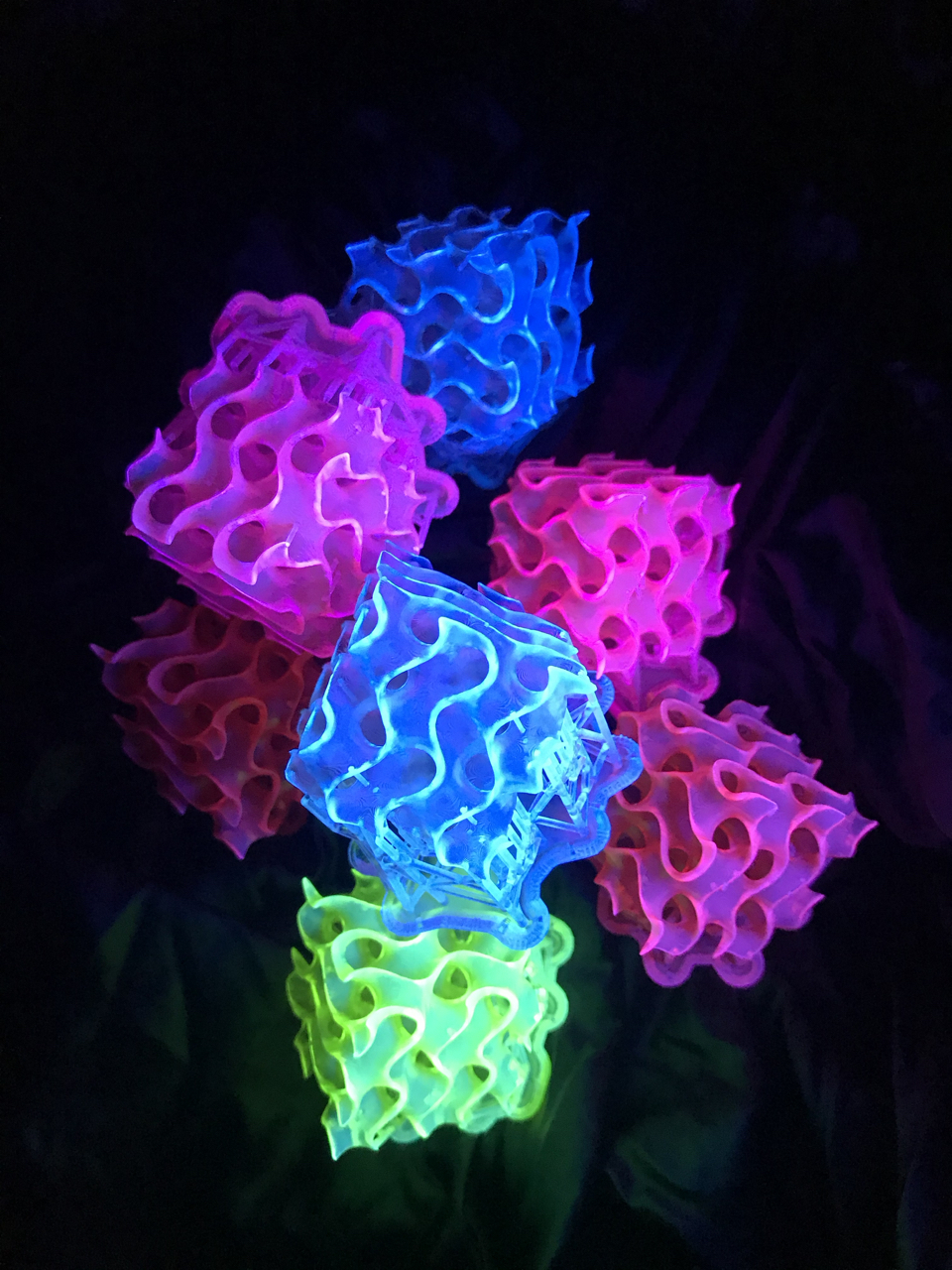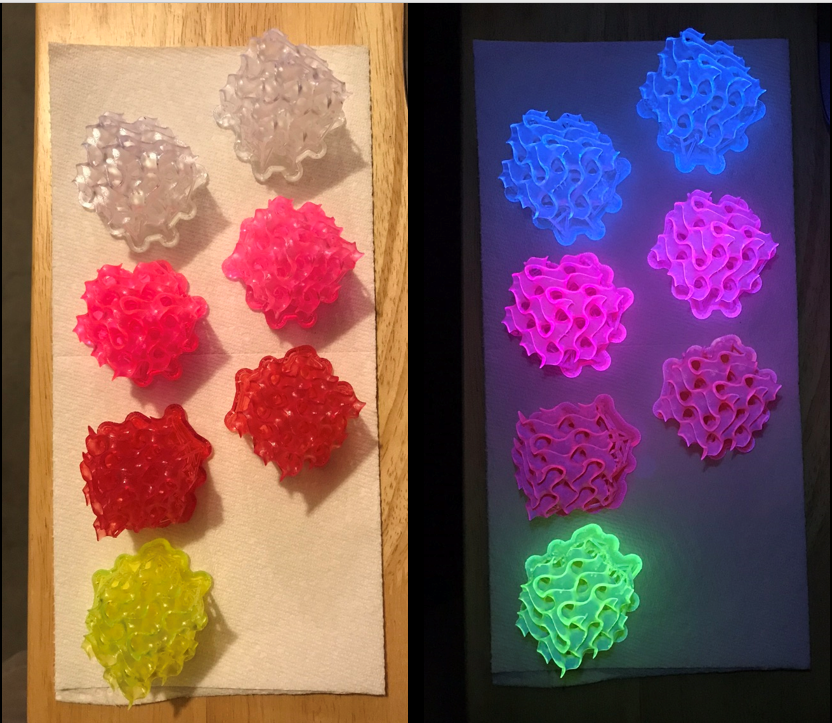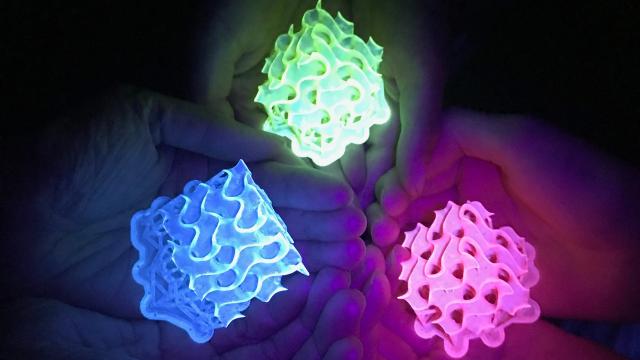Fluorescence is typically associated with gases or liquids, but a team of chemists has conjured a new formula that gives solid materials that characteristic fluorescent glow.
New research published today in the scientific journal Chem describes a newly developed material, dubbed SMILES, that can be transformed into a solid, crystalline state with an unusually bright fluorescent glow when seen under ultraviolet light. The new formulation could conceivably be used across a wide spectrum of applications, from solar energy harvesting and solid state lasers through to bioimaging and 3D display technologies — basically, any kind of tech that requires bright fluorescence.
Fluorescence describes a class of chemicals capable of emitting visible light after absorbing invisible, shorter-wavelength radiation like ultraviolet light. This is typically achieved with gases or liquids, which aren’t ideal states of matter when integrated with technology, as they’re hard to contain and manufacture, according to Amar Flood, a chemist at Indiana University and co-senior author of the study. Indeed, gases and liquids have a tendency to leak, among other shortcomings.

Solids, on the other hand, “allow you to pack more fluorescent dye molecules into a smaller space, so the footprint is smaller,” explained Flood in an email. “For example, one small ice cube melts to a tablespoon of liquid water and the same amount expands to the size of a beach ball when made into a gas.”
The preference for solid materials is also about certitude, he said.
“In solids we know where things are because they stay put,” Flood explained. “So, it becomes more appealing to start to design properties into solids because we can control the interior structures.”
The development of solid fluorescent materials represents somewhat of a holy grail for chemists owing to a phenomenon called “quenching.” This happens when fluorescent dyes, after entering into a solid state, get squished together, producing a muted glow. This close proximity causes interference, and the dyes stop behaving as stand-alone ingredients. Sadly, “when putting dyes into solids, they couple together and stop fluorescing — they also change colour in unpredictable ways,” said Flood.
To solve this problem, Flood, with the help of co-author Bo Laursen from the University of Copenhagen, took coloured dyes and mixed them with a colourless solution containing a star-shaped molecule known as cyanostar. This worked to prevent unwanted interactions between the fluorescent dyes as the formula was transformed into a solid state, allowing the dyes to retain their fluorescent qualities. The solid mixture, a state known as SMILES, or small-molecule ionic isolation lattice, essentially resulted in a lattice-like structure, within which the dyes could remain intact and isolated.
Using the SMILES materials, the chemists created 3D-printed objects, called gyroids, that glow under ultraviolet light.

Bright fluorescent materials have been created before, which Flood described as “one-offs” and even “flukes” owing to the trial-and-error way in which these materials were developed.
“We allow the process to become foolproof by offering design rules,” he said, adding that the critical breakthrough was to “explore ideas of hierarchical self-assembly, or, how to make solids form regular lattices.” Key to this were the cyanostars, which have no colour. As a consequence, “they produce the checkerboard lattice but play no other role than one of isolation,” so in the solid, the dyes “no longer interfere with each other to turn off the fluorescence and change the colour,” Flood explained.
In tests, the new materials were 30 times brighter than a benchmark material known as cadmium selenide quantum dots, which are used for medical diagnostics.
Looking ahead, Flood and his colleagues plan to explore the tolerances and mechanical properties of this newfangled material, which will determine its suitability across a wide range of possible applications.
